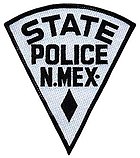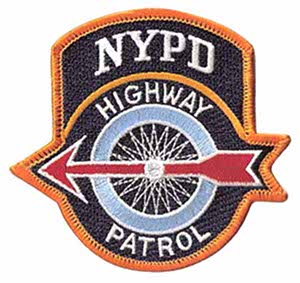
The Highway Patrol are specialized units part of the Highway District with the Transportation Bureau of the New York City Police Department. The Highway Patrol is primarily responsible for patrolling and maintaining traffic safety on limited-access highways within New York City. The Highway Patrol's other duties and roles include accident investigations, advanced driver and radar/laser speed enforcement training for NYPD officers, field sobriety testing at the various testing locations in each Patrol Borough, dignitary and parade escorts, hazardous material and truck traffic enforcement, anti-drag racing programs, and anti-terrorist checkpoints at key bridges and intersections in the city.

The West Virginia State Police (WVSP) is a state law enforcement agency in the United States that provides police services to the residents of West Virginia. It is the fourth-oldest state police agency in the US. The WVSP was disbanded due to their involvement in quelling of the uprisings on behalf of the coal and mine companies which were surrounding the concept of organized labor in the coal and mine industries. The WVSP was then reorganized as the Department of Public Safety in the second extraordinary session of the West Virginia Legislature on June 19, 1919, as a result of their involvement.

The Michigan State Police (MSP) is the state police agency for the U.S. state of Michigan. The MSP is a full-service law enforcement agency, with its sworn members having full police powers statewide.

The Fresno Police Department (FPD) is the municipal police department for Fresno, California. Their headquarters is located at 2323 Mariposa Mall. Paco Balderama is the current Chief of Police for the Fresno Police Department since January 11, 2021.
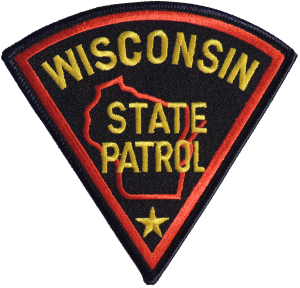
The Wisconsin State Patrol is the state patrol for the state of Wisconsin and is a division of the Wisconsin Department of Transportation. The Wisconsin State Patrol enforces traffic and criminal laws, oversees the motor carrier safety and weight facilities (SWEFs), inspects and regulates motor carriers, school buses and ambulances, and assists local law enforcement agencies with traffic safety, civil disturbances and disasters.
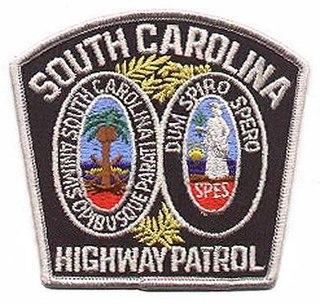
The South Carolina Highway Patrol (SCHP) is the highway patrol agency for South Carolina, which has jurisdiction anywhere in the state except for federal or military installations. The Highway Patrol was created in 1930 and is an organization with a rank structure similar to the armed forces. The mission of the South Carolina Highway Patrol includes enforcing the rules and regulations in order to ensure road way safety and reducing crime as outlined by South Carolina law. The Highway Patrol is the largest division of the South Carolina Department of Public Safety and its headquarters is located in Blythewood. This department also includes the South Carolina State Transport Police Division, and the South Carolina Bureau of Protective Services.
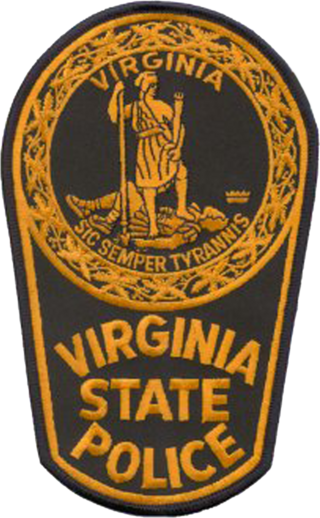
The Virginia State Police, officially the Virginia Department of State Police, conceived in 1919 and established in 1932, is the state police force for the U.S. state of Virginia. The agency originated out of the Virginia Department of Motor Vehicles as an inspector and enforcer of highway laws. It is currently one of fourteen agencies within the Cabinet Secretariat of Public Safety, under the leadership of Secretary Brian Moran until his resignation in January 2022. On January 18, 2018, Gary T. Settle was sworn in as Superintendent of the Virginia State Police. Colonel Settle replaced retiring Colonel W. Steven Flaherty, who had served since 2003.
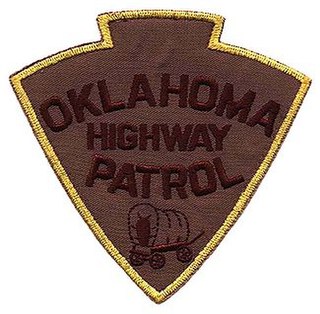
The Oklahoma Highway Patrol (OHP) is a major state law enforcement agency of the government of Oklahoma. A division of the Oklahoma Department of Public Safety, the OHP has traffic enforcement jurisdiction throughout the state. OHP was legislatively created on July 1, 1937, due to the growing problem of motor vehicle collisions, the expansion of highway systems, and the increase in criminal activities.

The Colorado State Patrol(CSP) (originally known as the Colorado State Highway Courtesy Patrol), based in Lakewood, Colorado, is a division of the Colorado Department of Public Safety, and is one of the official state patrol agencies of Colorado, along with the Colorado Bureau of Investigation (CBI), Colorado Division of Criminal Justice (DCJ), Colorado Division of Fire Prevention & Control (DFPC), and Colorado Division of Homeland Security and Emergency Management (DHSEM). Additionally, the Executive Director's Office supports operations of the five divisions and houses the Colorado School Safety Resource Center (CSSRC) and Colorado Integrated Criminal Justice Information Systems (CJIS). The CSP primarily enforces traffic laws on interstates and state highways and guards the state capitol and the Governor of Colorado.

The Texas Highway Patrol is a division of the Texas Department of Public Safety and is the largest state-level law enforcement agency in the U.S. state of Texas. The patrol's primary duties are enforcement of state traffic laws and commercial vehicle regulation, but it is a fully empowered police agency with authority to enforce criminal law anywhere in the state. Highway patrol troopers are also responsible for patrolling the state Capitol Complex in Austin and providing security to the governor. The current Chief is Lieutenant Colonel Dwight Mathis.
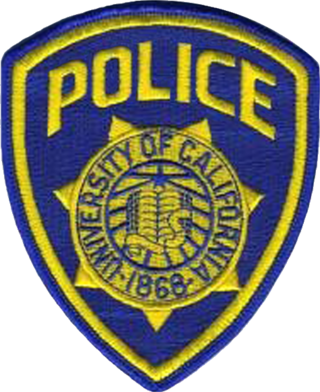
Police departments in the University of California system are charged with providing law enforcement to each of the system's campuses.

The Maryland Natural Resources Police (NRP) is the law enforcement arm of the Maryland Department of Natural Resources (DNR), tasked with enforcing laws on the state's public lands and waterways, protecting fish and wildlife, and leading search and rescue efforts. The Natural Resources Police is also the state's maritime homeland security agency.
Akron Police Department is the primary municipal law enforcement agency for the city of Akron, Ohio, United States with 451 employees. The current Police Chief is Stephen L. Mylett.

The New York City Police Department (NYPD) is structured into numerous bureaus and units. As a whole, the NYPD is headed by the Police Commissioner, a civilian administrator appointed by the Mayor, with the senior sworn uniformed officer of the service titled "Chief of Department". The Police Commissioner appoints the First Deputy Commissioner as the department's second-in-command and the Chief of Department as the department's highest ranking uniformed officer. The commissioner also appoints a number of deputy and assistant commissioners who do not have operational command and are solely for support and administrative function. The department is divided into twenty bureaus, six of which are enforcement bureaus. Each enforcement bureau is further subdivided into sections, divisions, and units, and into patrol boroughs, precincts, and detective squads. Each bureau is commanded by a bureau chief. There are also a number of specialized units that are not part of any of the bureaus and report to the Chief of the Department.

In the United States, the state police is a police body unique to each U.S. state, having statewide authority to conduct law enforcement activities and criminal investigations. In general, state police officers or highway patrol officers, known as state troopers, perform functions that do not fall within the jurisdiction of a county’s sheriff, such as enforcing traffic laws on state highways and interstates, overseeing security of state capitol complexes, protecting governors, training new officers for local police forces too small to operate an academy and providing technological and scientific services. They also support local police and help to coordinate multi-jurisdictional task force activity in serious or complicated cases in states that grant full police powers statewide.
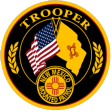
The New Mexico Mounted Patrol is an all-volunteer state law enforcement agency. Mounted Patrol Troopers complete an intensive night/weekend academy and must meet the same strict requirements as any peace officer in New Mexico. State statutes dictate that the governor may call the Mounted Patrol to duty in case of emergency. Unless called out by the governor, troopers assist state, county and municipal law enforcement agencies and assume the same authority as peace officers in that agency.

The Raleigh Police Department is the municipal law enforcement agency of Raleigh, North Carolina.

The Durham Police Department is the municipal law enforcement agency of Durham, North Carolina.

The Milwaukee County Sheriff's Office is the principal law enforcement agency that serves Milwaukee County, Wisconsin. It provides law enforcement services for the county's freeways and outlying lettered County Trunk Highways, the Milwaukee County Courthouse, the Milwaukee County Criminal Justice Facility and House of Corrections, the county-owned Milwaukee Mitchell International Airport, and the Milwaukee County Parks system, including all of the Milwaukee County lakefront, along with the county's few unincorporated sections.
